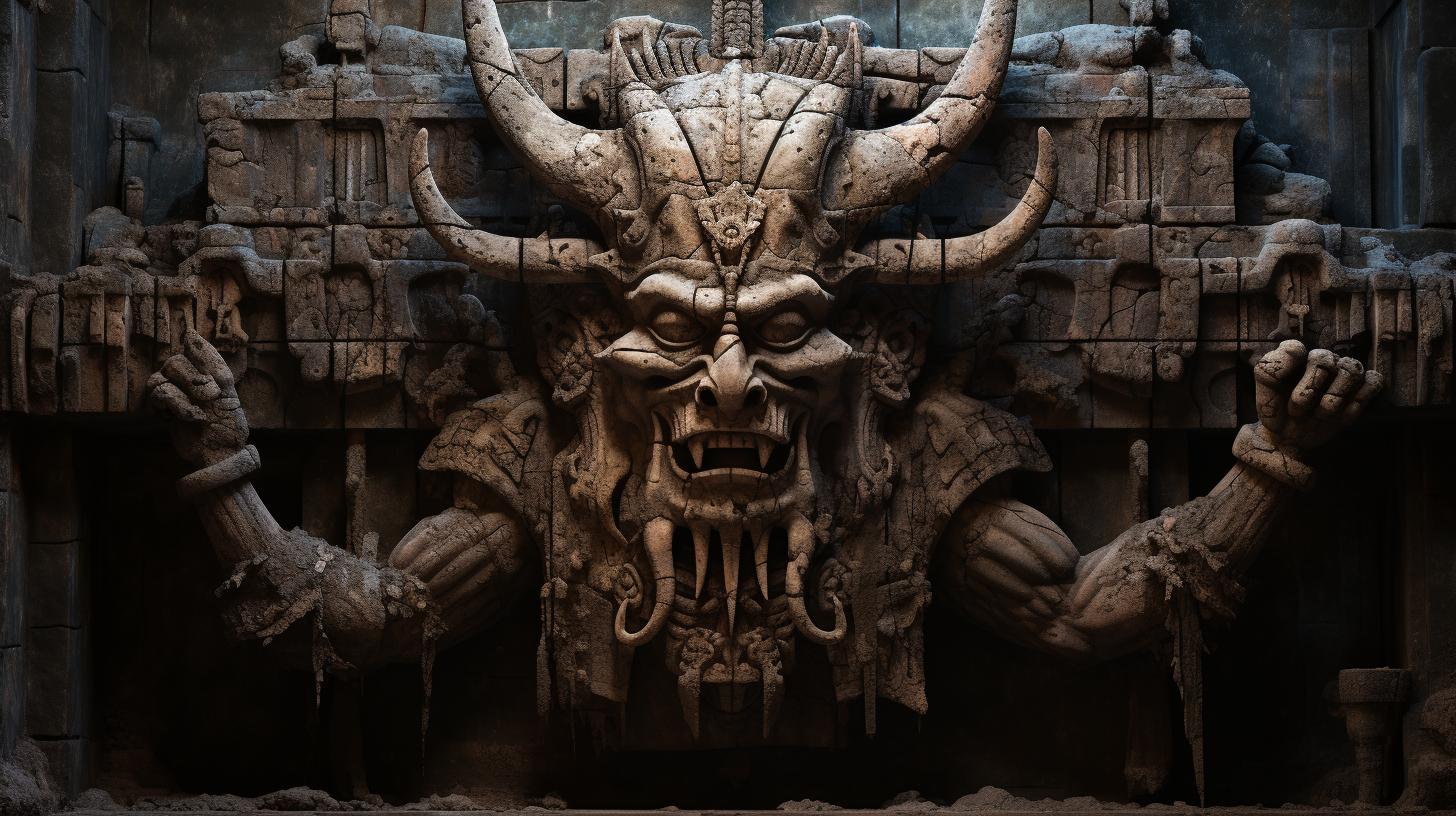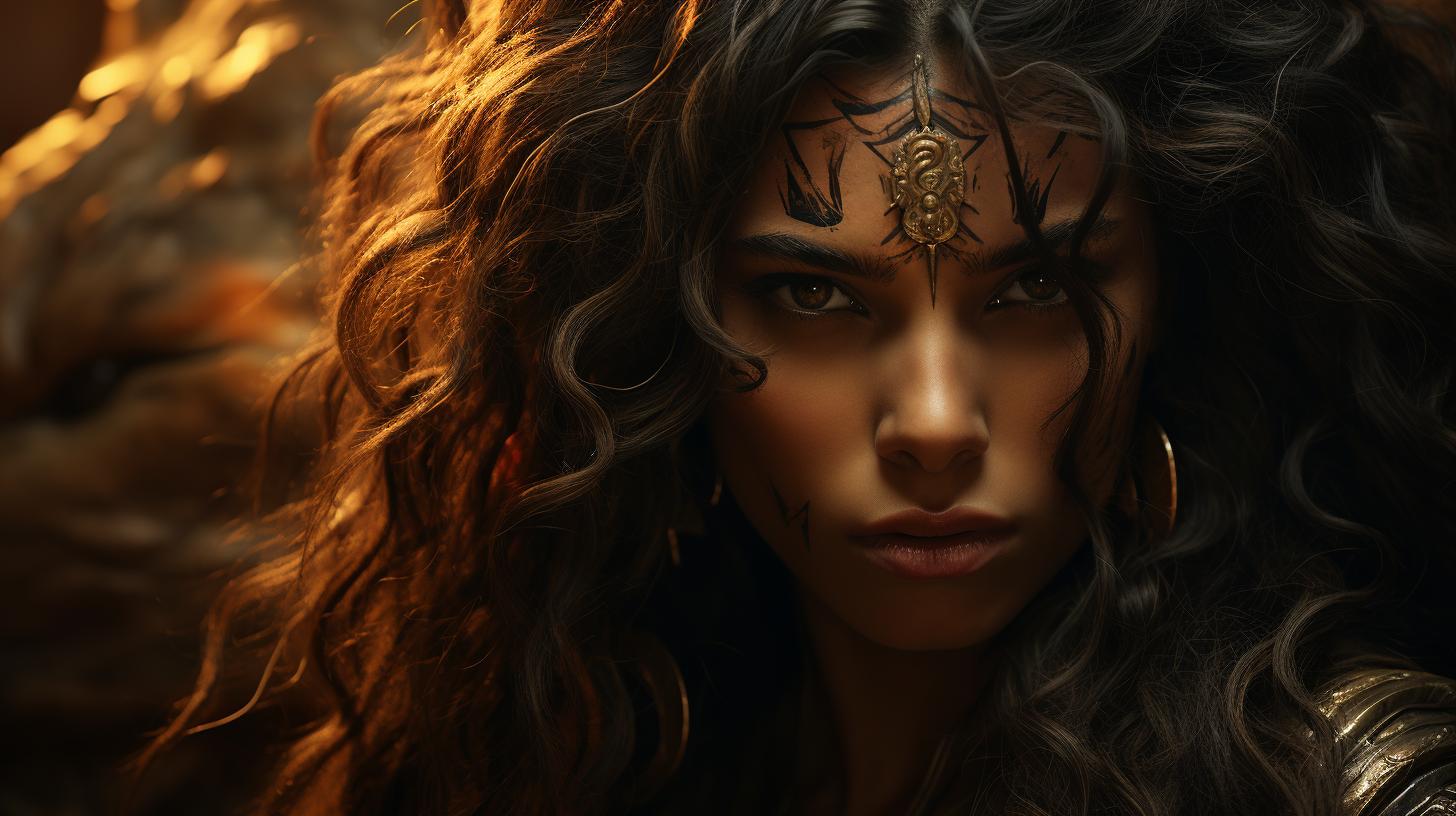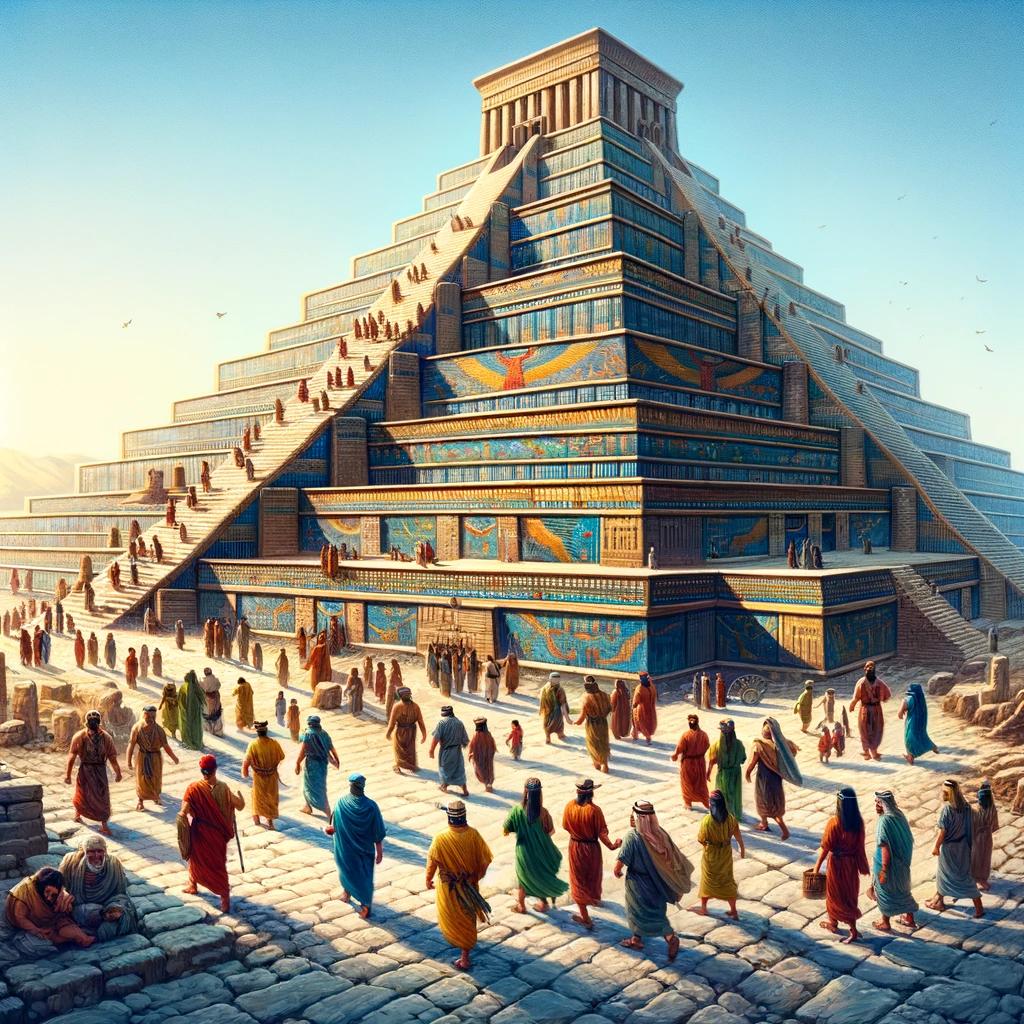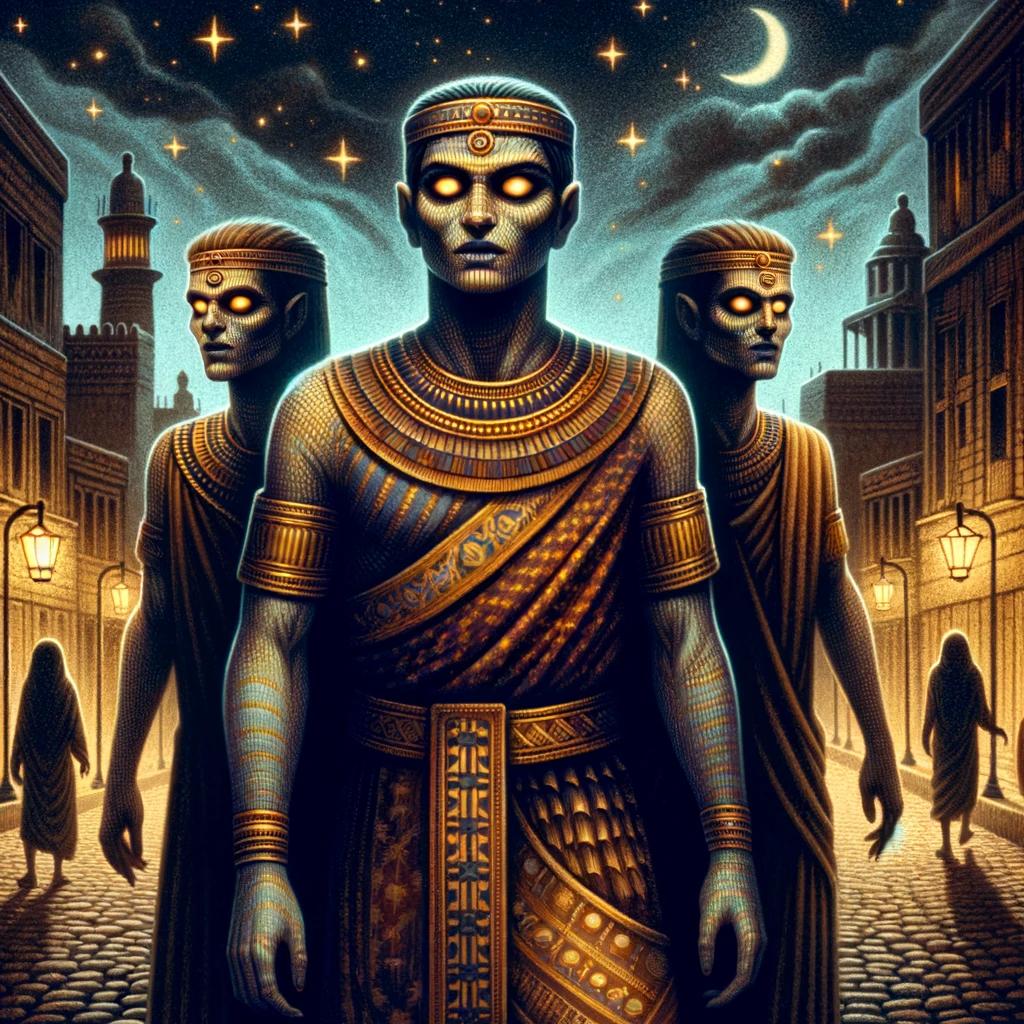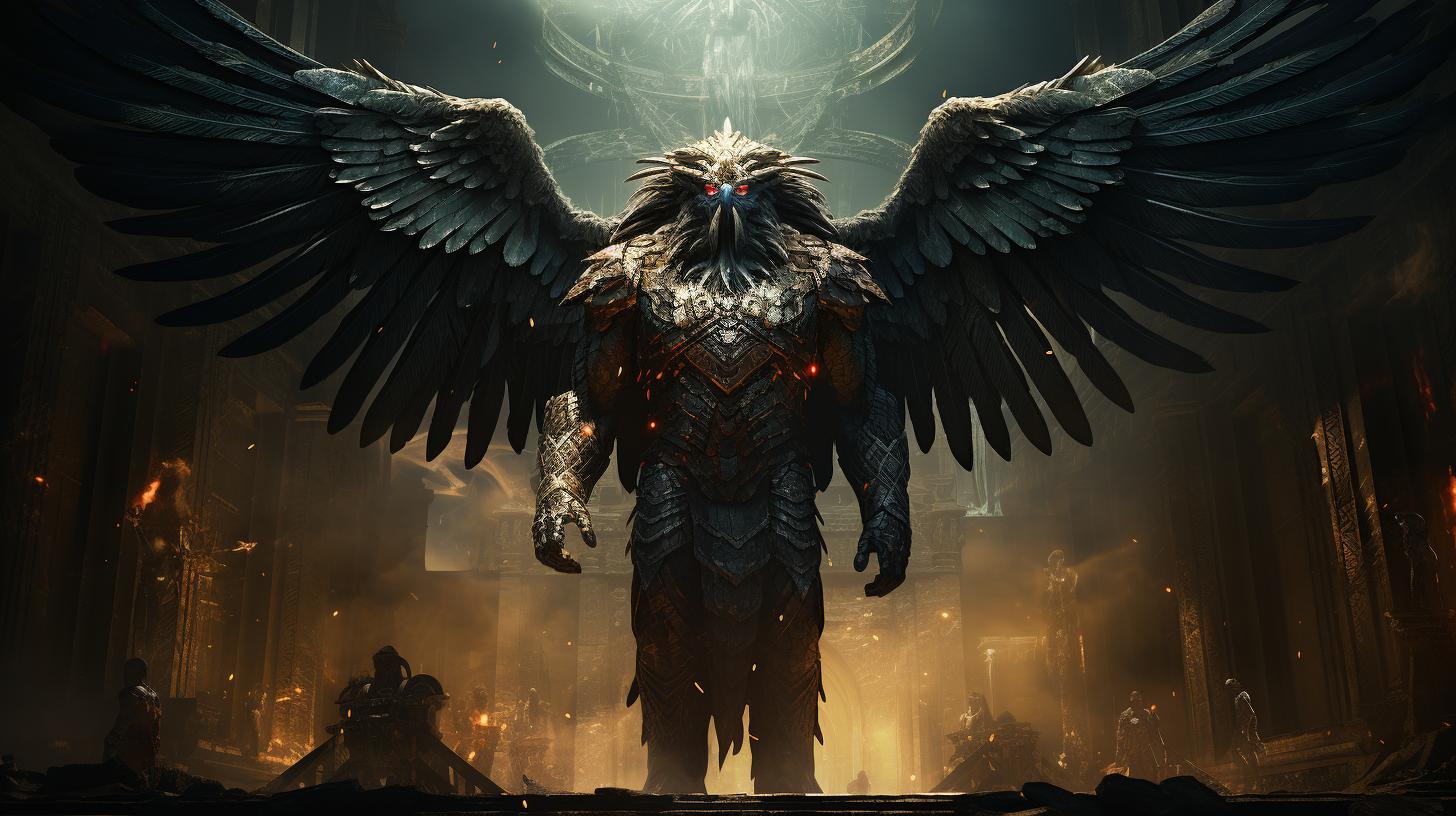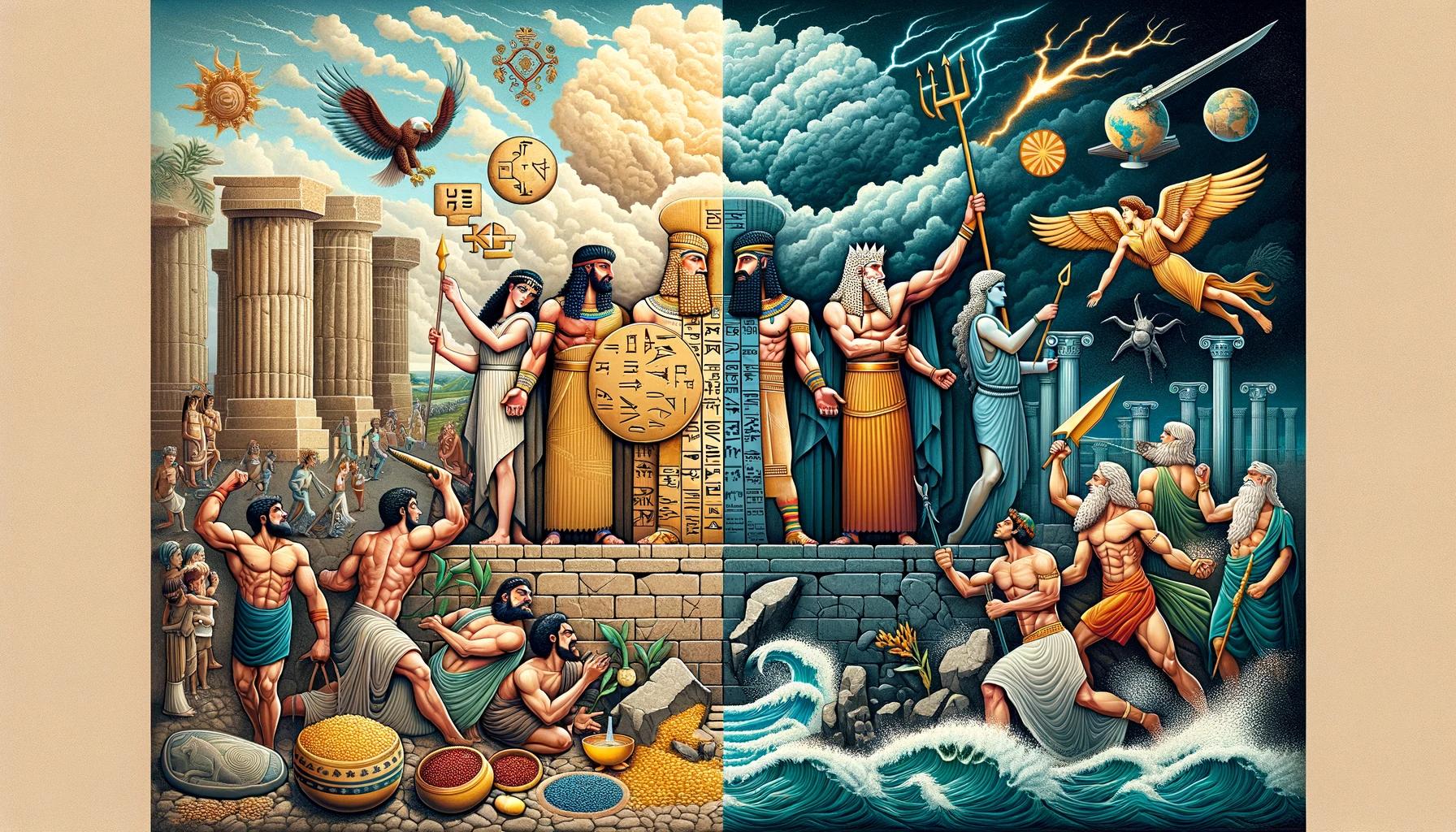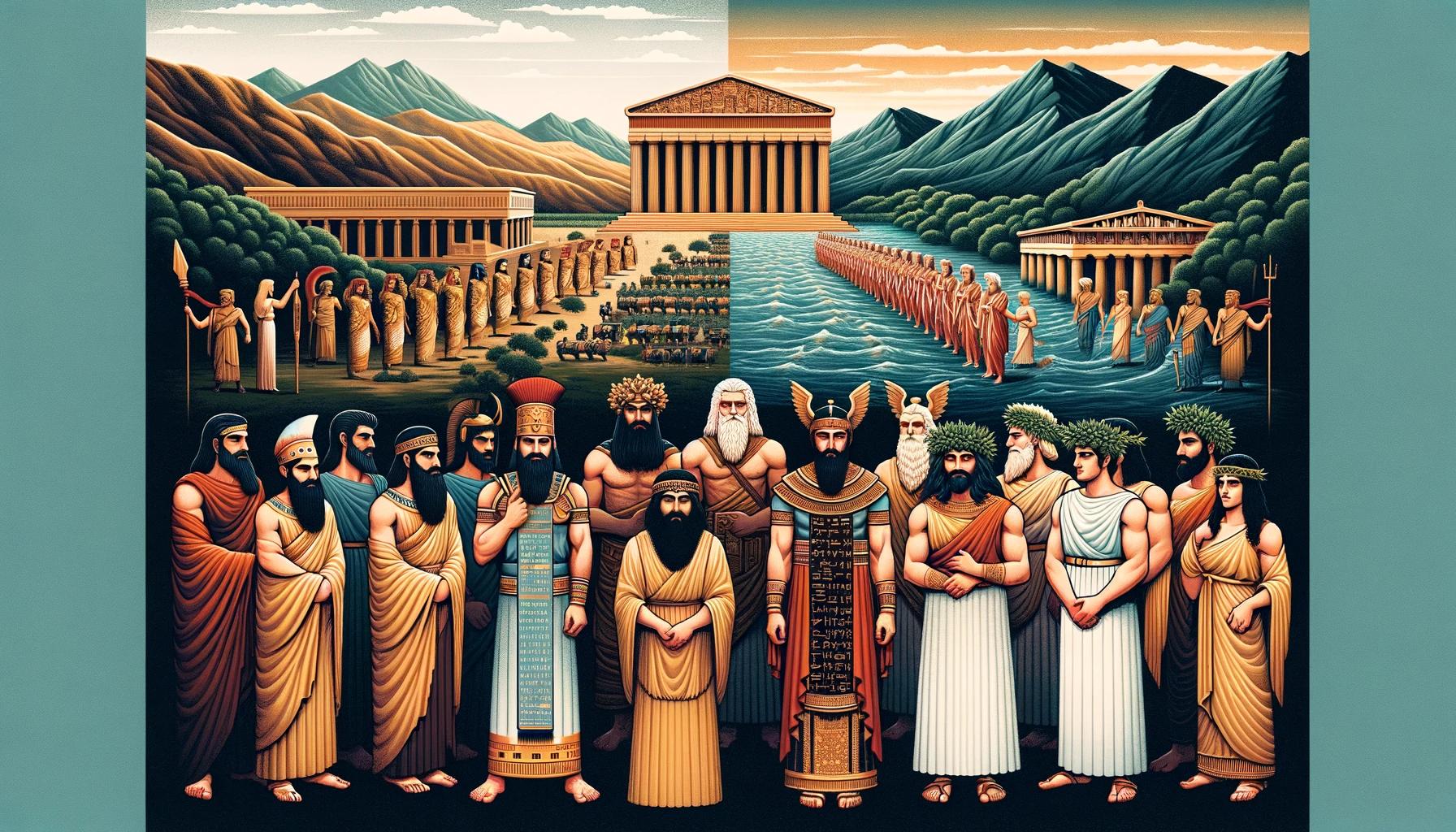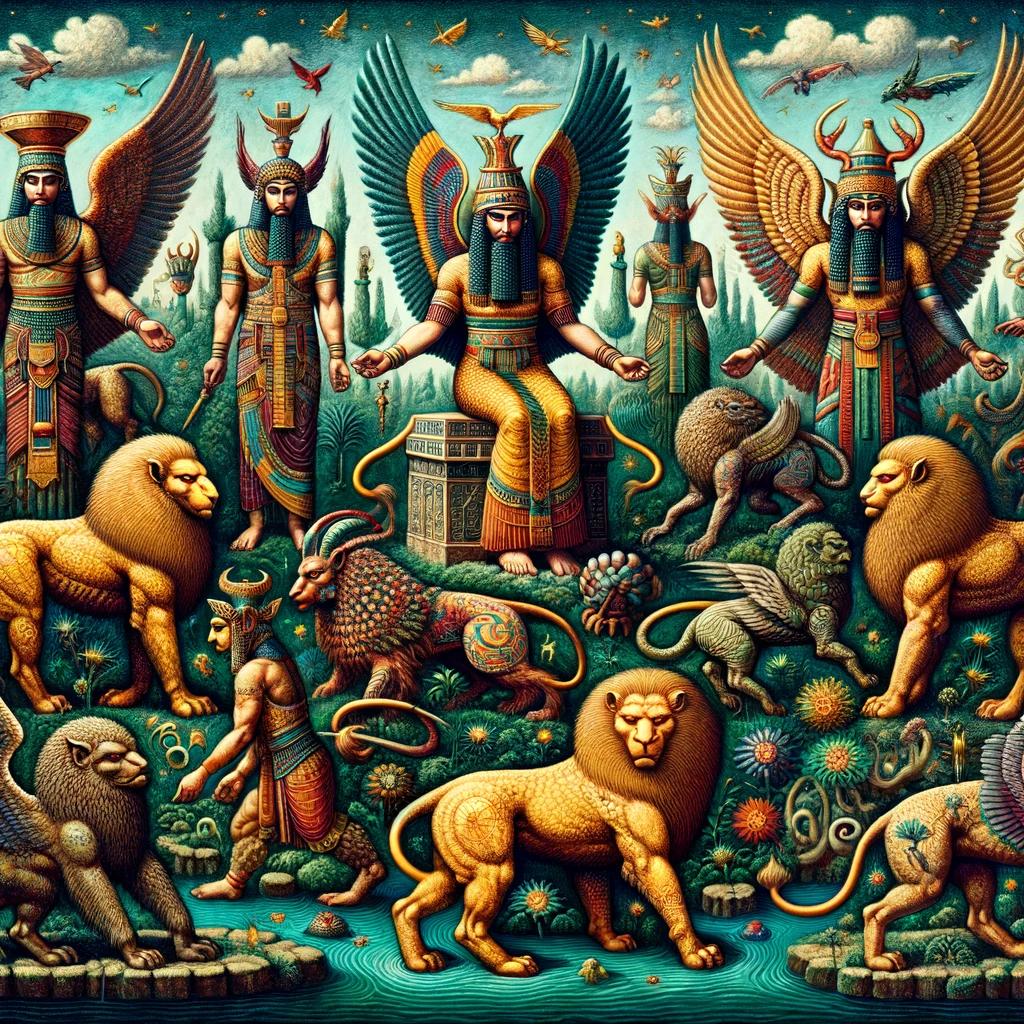‘Mesopotamian Demon Rabisu: Unveiling the Ancient Evil Lurking in Mesopotamian Mythology’
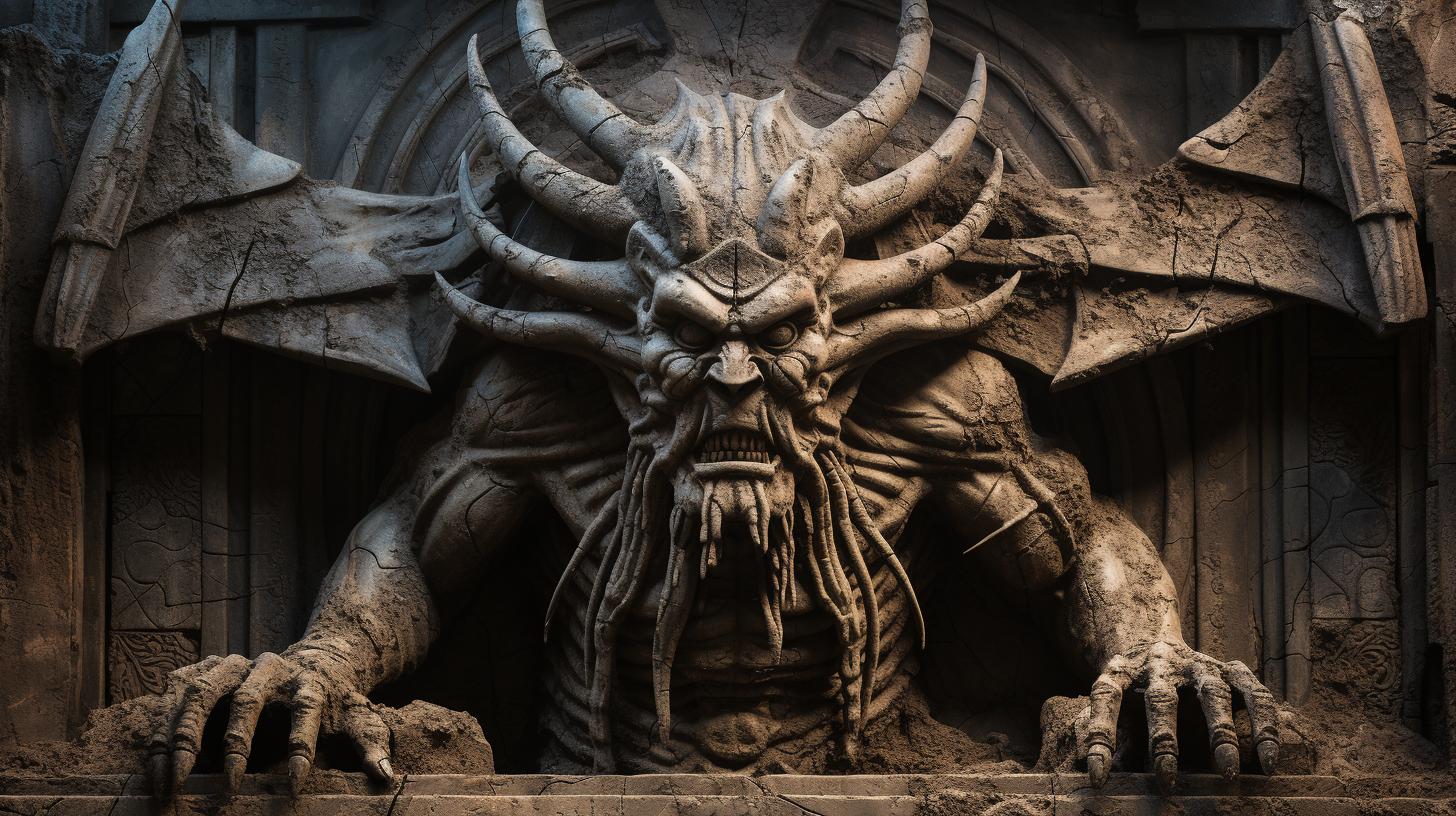
Mesopotamian demon Rabisu, a vampiric and demonic entity, holds a significant place in ancient Mesopotamian mythology. With origins deeply rooted in Akkadian lore, Rabisu is characterized as both a malevolent enforcer and a divine messenger.
Legends and texts from the Babylonian and Sumerian cultures depict encounters between heroes and the relentless Rabisu. These mythical beings, associated with correcting human transgressions, have sparked comparisons with demonic entities in Hebrew traditions.
Exploring rituals, modern interpretations, and lingering mysteries, this article delves into the enigmatic presence of the Mesopotamian demon Rabisu.
1. Origins of Mesopotamian Demon Rabisu
Ancient Mesopotamian Mythology and Beliefs
In ancient Mesopotamian mythology, beliefs and cosmology played a central role in shaping the understanding of the world and the supernatural beings within it. The Mesopotamian civilization, known for its advanced culture and rich religious traditions, believed in a complex pantheon of gods and creatures that governed the fate of humanity.
Introduction to Rabisu in Mesopotamian Lore
Rabisu, a demon of Mesopotamian lore, emerges as a significant supernatural entity in the mythology of the region. As part of the extensive Akkadian mythology, Rabisu holds a distinctive place among the pantheon of Mesopotamian demons.
These mesopotamian demons, also known as daimons, are characterized by their vampiric and demonic attributes.
“);
The Nature and Characteristics of Rabisu
The Mesopotamian demon Rabisu possesses distinct vampiric and demonic traits that contribute to its fearsome reputation in ancient lore.
Vampiric and Demonic Traits of Rabisu
The Rabisu is often associated with vampiric characteristics, as it is believed to feed on the life force of its victims. It preys upon both humans and animals, draining them of their vitality and leaving them weakened or even dead.
This insatiable hunger for life energy contributes to the malevolent nature of the Rabisu, as it shows no mercy.
Furthermore, the Rabisu exhibits demonic traits in its appearance and behavior. Descriptions depict a menacing creature with sharp fangs, clawed hands, and glowing eyes.
Its terrifying presence strikes fear into the hearts of those who encounter it, as it is known to haunt and linger in the shadows, waiting to strike when least expected.
Associations and Meanings of the Name Rabisu
The name “Rabisu” holds significant symbolism in Mesopotamian culture.
Derived from the Akkadian term “rabasu,” meaning “to lie in wait,” it perfectly encapsulates the essence of this demon. The name highlights Rabisu’s role as an ambush predator, patiently stalking its prey and striking with calculated precision.
Additionally, the name Rabisu serves as a reminder of the demon’s association with darkness and malevolent forces. It conveys a sense of lurking danger and hidden malevolence, emphasizing the enigmatic and ominous nature of this Mesopotamian entity.
Rabisu in Mythological Texts and Stories
Exploring the role of Rabisu in ancient Mesopotamian mythology unveils intriguing narratives and captivating folklore. This section delves into the significance and representations of Rabisu in Akkadian, Babylonian, and Sumerian tales.
Role of Rabisu in Akkadian Mythology
In Akkadian mythology, Rabisu takes on a multifaceted role as both a malevolent entity and a divine messenger. As enforcers of the gods’ will, Rabisu are sent as messengers between celestial beings and earthly realms.
Rabisu’s presence in Akkadian myths serves as a reflection of the gods’ authority and their involvement in mortal affairs. Their appearances often coincide with transgressions committed by humans, acting as divine agents sent to correct these misdeeds.
Rabisu in Babylonian and Sumerian Legends
Babylonian and Sumerian texts further explore the concept of Rabisu, showcasing their encounters with heroes and their intricate connections to the human realm. In these legends, Rabisu often emerge as formidable challenges and obstacles that heroes must confront in order to prove their worth and overcome adversity.
- The tales depict Rabisu as relentless adversaries, relentlessly stalking their prey before launching their attacks.
- As heroes embark on their journeys, their confrontations with Rabisu are seen as pivotal moments of trials and tests of courage.
- Rabisu’s presence underscores the themes of moral exploration, inner strength, and the overcoming of challenges within the context of ancient Mesopotamian myths.
By examining the roles that Rabisu play in Akkadian, Babylonian, and Sumerian mythologies, we gain valuable insights into the intricate tapestry of ancient Mesopotamian beliefs and the cultural significance of these mythical entities.
To continue unraveling the enigmatic nature of Rabisu, let us delve into their role in ancient Mesopotamian society and their connections to other mythological traditions.
The Role of Rabisu in Ancient Mesopotamian Society
Rabisu, the mesopotamian demon, played a significant role in ancient Mesopotamian society, serving as a conduit between the divine realm and humanity.
This section delves into the divine aspects and intervention of Rabisu as well as the encounters heroes had with this formidable creature in Sumerian epics.
Rabisu as Divine Messengers and Correctors of Transgressions
Within the realm of Mesopotamian mythology, Rabisu was often depicted as a divine messenger entrusted with the responsibility of ensuring justice and correcting human transgressions.
Sent by the god Enlil, these demons acted under the authority of the divine, carrying out their tasks with unwavering determination.
- Rabisu served as an intermediary messenger between celestial beings and mortals.
- They acted as enforcers of divine will and punishment for those who strayed from the divine path.
- These demons were sent to rectify transgressions committed by humans, ensuring the preservation of order and balance in Mesopotamian society.
Heroes and their Encounters with Rabisu in Sumerian Epics
The Sumerian epics brought forth tales of brave heroes who embarked on arduous journeys, facing numerous challenges, including encounters with the formidable Rabisu.
These encounters tested their mettle and showcased their ability to overcome obstacles in their quest for glory and vindication.
- Heroes encountered Rabisu as part of their heroic journeys, symbolizing the trials they needed to overcome to prove their worth.
- These confrontations highlighted the hero’s courage and determination in the face of supernatural adversaries.
- Rabisu presented a formidable challenge, often requiring the hero to tap into their inner strength and employ cunning strategies to emerge victorious.
Through these interactions, Rabisu served as a catalyst for the hero’s growth and transformation, pushing them to their limits and ultimately shaping their destiny.
Comparisons and Connections with Other Mythologies
In exploring the Mesopotamian demon Rabisu, it becomes evident that there are intriguing parallels and connections with other mythological traditions. Comparisons with the Hebrew tradition reveal intriguing similarities to demonic entities.
Similarities to Demonic Entities in Hebrew Tradition
The Hebrew tradition introduces the term ‘Robes’ to describe a similar type of malevolent spirit. Interestingly, this term is associated with Rabisu in some translations. While scholars debate the exact nature of Rabisu’s inherent evil, both entities are believed to act under divine authority.
The presence of demonic entities in both Mesopotamian and Hebrew mythologies highlights the universality of these themes across cultures. It offers insights into the shared fears and beliefs of ancient civilizations, despite geographic and cultural differences.
Cross-cultural Influences and Comparative Analysis
Examining the cross-cultural influences and comparative analysis of Rabisu brings to light intriguing connections with other mythological traditions beyond the Hebrew lore. These include similarities found in ancient Egyptian, Greek, and even Norse mythologies.
- Religious syncretism between ancient cultures often led to the merging of deities and mythological figures, resulting in shared attributes or traits.
- The theme of divine messengers or enforcers correcting human transgressions can also be traced in various mythologies worldwide, emphasizing the universal human struggle with morality and divine justice.
- Symbolism associated with the Rabisu, such as its vampiric and demonic traits, holds parallels with similar creatures found in other mythological systems.
This comparative analysis not only enriches our understanding of the Mesopotamian demon Rabisu but also provides a broader context for the study of ancient mythologies and their interconnectedness.
Rituals and Practices Associated with Rabisu
Rabisu, the enigmatic Mesopotamian demon, played a significant role in various rituals and practices within ancient Mesopotamian culture. This section delves into two specific aspects: the role of Rabisu in Šurpu rituals and witch-burning practices, as well as its significance in ancient Mesopotamian magic.
Rabisu in Šurpu Rituals and Witch-Burning Practices
In the ancient Akkadian tradition, Šurpu rituals were performed to purify and protect individuals from malevolent spirits and entities, including the notorious Rabisu. These rituals involved the burning of various substances, such as herbs, incense, and offerings, to evoke divine intervention and banish evil forces.
The presence of Rabisu in Šurpu rituals highlights its association with wickedness and the need for spiritual cleansing.
Another intriguing aspect of Rabisu’s involvement in ancient Mesopotamian rituals is its connection to witch-burning practices. These practices were woven into religious customs and were performed to eliminate individuals believed to possess dark powers and engage in maleficent acts.
Rabisu, often associated with malevolence, played a symbolic role in these rituals as an embodiment of wickedness and a target for purification and societal well-being.
Role of Rabisu in Ancient Mesopotamian Magic
Mesopotamian magic, a complex system of rituals and spells, often incorporated the figure of Rabisu. Within the realm of ancient Mesopotamian occult practices, Rabisu was believed to possess supernatural abilities and knowledge.
It was invoked in rituals aimed at protection, healing, and divination.
Rabisu’s significance in Mesopotamian magic was not limited to its malevolent reputation. It was considered a potent intermediary between the human realm and the divine. Ancient Mesopotamians believed that harnessing the power of Rabisu could help them fulfill their desires, ward off evil spirits, and gain insight into the supernatural world.
- Protection rituals: The inclusion of Rabisu in protective spells and talismans aimed to defend against negative influences and ensure personal safety.
- Healing practices: Rabisu was invoked in healing rituals to alleviate physical and spiritual ailments, displaying its potential as a benevolent force in the realm of magic.
- Divination ceremonies: Seeking guidance and glimpses into the future, ancient Mesopotamians turned to Rabisu’s wisdom and knowledge, believing it could provide valuable insights.
In conclusion, the involvement of Rabisu in rituals and practices within ancient Mesopotamian society showcases its significance as a transformative entity.
From its association with Šurpu rituals and witch-burning practices to its role in Mesopotamian magic, Rabisu served as both a symbol of malevolence and a channel for spiritual purification, protection, and divination.
The Legacy and Continued Influence of Rabisu
The Mesopotamian demon Rabisu continues to captivate the modern imagination with its enigmatic presence and multifaceted nature. As scholars delve deeper into the ancient myths and beliefs, they uncover various modern interpretations and representations of Rabisu, shedding new light on its legacy and continued influence.
Modern Interpretations and Representations
In contemporary art and literature, artists and authors have drawn inspiration from the Mesopotamian demon Rabisu, reimagining its appearance and exploring its intriguing traits. Through visual mediums, Rabisu is depicted as a menacing and malevolent figure, often associated with darkness, shadows, and supernatural abilities.
Writers weave captivating tales, incorporating Rabisu as a key antagonist or an embodiment of chaos and evil.
Moreover, Rabisu has also found a place in popular culture, making appearances in movies, television shows, and video games.
Its portrayal varies, ranging from terrifying adversaries to symbolic representations of inner demons. These adaptations and reinterpretations, influenced by Mesopotamian mythology, contribute to the continued legacy of Rabisu in the modern world.
Rabisu in Popular Culture and Contemporary Media
The influence of Rabisu in popular culture extends beyond visual arts and literature. Characters inspired by its vampiric and demonic traits have made their way into fantasy role-playing games, becoming notable figures that players encounter and battle against.
These representations further perpetuate the mystique surrounding Rabisu and maintain its relevance in contemporary media.
Furthermore, discussions and references to Rabisu can be found in online forums, social media platforms, and various online communities.
Enthusiasts and researchers share their interpretations, theories, and insights into this Mesopotamian demon, contributing to ongoing conversations and expanding public awareness of its significance.
The presence of Rabisu in popular culture and contemporary media demonstrates its enduring influence and serves as a reminder of ancient Mesopotamian mythological traditions.
Unraveling the Ancient Secrets: Exploring Rabisu further
In this section, we delve deeper into the enigmatic world of the Mesopotamian demon Rabisu, seeking to unravel its ancient secrets and shed light on its intriguing nature. Through speculations, theories, and future research, we aim to gain a better understanding of this mysterious entity.
Speculations and Theories Surrounding Rabisu
Various speculations and theories have emerged regarding the origin, purpose, and characteristics of the Mesopotamian demon known as Rabisu. Scholars hypothesize about its role in Mesopotamian cosmology, its relationship with other mythological beings, and the symbolism behind its vampiric and demonic traits.
Some theories suggest that Rabisu may represent a moral arbiter, while others propose a connection to forces of nature or as guardians of divine authority.
Additionally, debates surround the role of Rabisu in ancient rituals and its association with witch-burning practices.
Some theorize that Rabisu played a significant part in summoning and banishing rituals, serving as a mediator between humans and the divine realm. Others argue that Rabisu may have been invoked as a protector against malign entities or as a means of propitiating divine favor.
Future Research and Discoveries
The exploration of Rabisu is an ongoing endeavor, with new discoveries and insights awaiting further investigation. Future research efforts can focus on deciphering untranslated texts, analyzing archaeological findings, and conducting comparative studies across different cultures and mythologies.
Advancements in technology and interdisciplinary approaches may offer valuable tools to unravel the remaining mysteries surrounding Rabisu. By combining textual analysis, historical research, and archaeology, we can gain a more comprehensive understanding of the roles, influences, and symbolism associated with this ancient Mesopotamian demon.
- Further exploration of Rabisu’s presence in different mythological traditions.
- Investigation into the cultural and societal implications of Rabisu’s portrayal.
- Examination of Rabisu’s influence on contemporary pop culture.
- Comparison with similar entities in neighboring regions and cultures.
As we continue to unravel the ancient secrets of Rabisu, we move closer to a deeper understanding of this mesmerizing creature and its significance in Mesopotamian lore.
.











